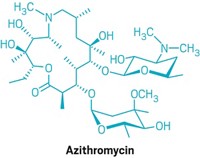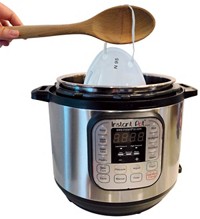Advertisement
Grab your lab coat. Let's get started
Welcome!
Welcome!
Create an account below to get 6 C&EN articles per month, receive newsletters and more - all free.
It seems this is your first time logging in online. Please enter the following information to continue.
As an ACS member you automatically get access to this site. All we need is few more details to create your reading experience.
Not you? Sign in with a different account.
Not you? Sign in with a different account.
ERROR 1
ERROR 1
ERROR 2
ERROR 2
ERROR 2
ERROR 2
ERROR 2
Password and Confirm password must match.
If you have an ACS member number, please enter it here so we can link this account to your membership. (optional)
ERROR 2
ACS values your privacy. By submitting your information, you are gaining access to C&EN and subscribing to our weekly newsletter. We use the information you provide to make your reading experience better, and we will never sell your data to third party members.
Education
Newscripts
Mighty microbes lurking in the kitchen
by Bethany Halford
March 19, 2018
| A version of this story appeared in
Volume 96, Issue 12
Extreme environments: Dishwasher edition

Whether they’re poking into 12,000-year-old permafrost in Switzerland, prodding the walls of a cave in New Mexico that’s been isolated for 4 million years, or probing the soil of the ultradry Atacama Desert, scientists have literally gone to the ends of the earth in their quest for microbes capable of surviving harsh environments. It turns out that they didn’t even need to leave the kitchen.
Scientists in Europe recently identified several hardy types of bacteria and fungi—some of which are opportunistic pathogens—lurking on the rubber seals of dishwasher doors. To make a home there, these microbes must withstand high temperatures, extremes of pH, high NaCl concentration, detergents, and the shear force of water during washing cycles.
The team, led by Søren J. Sørensen of the University of Copenhagen, investigated buildup on the door seals of 24 dishwashers using next-generation sequencing. Scientists previously examined pathogenic black yeast in dishwashers, but Sørensen’s study is the first to focus on biofilms, which likely provide protection to many more microbes (Appl. Environ. Microbiol.2018, DOI: 10.1128/AEM.02755-17).
The cleaning machines varied in age, frequency of use, and hardness of incoming tap water. All these characteristics had an impact on which bacteria and fungi were able to hunker down in the dishwashers, but no appliance was free of microbes. For example, the researchers found Candida, the fungi genus responsible for thrush and athlete’s foot, in every dishwasher they tested. This led the scientists to assume that Candida are “one of the first colonizers in recently purchased dishwashers.”
Sørensen and colleagues point out that because pathogenic microbes can survive on dishwasher seals, they might become a source of infections. Erica Hartmann, an expert in environmental microbiology and assistant professor at Northwestern University, told the media group HealthDay that the risk of getting sick from clandestine dishwasher microbes “is probably in the realm of a shark attack.” People shouldn’t worry “unless you’re licking” parts of the machine, Philip Tierno, professor of microbiology and pathology at NYU School of Medicine and author of “The Secret Life of Germs,” told NBC’s “Today.” He adds that a weekly washing with a solution of 10% bleach in water should kill off the mighty microorganisms.
Wipe ’em out with whiskey

Dishwashers aren’t the only household appliance to harbor bacteria. Microbes also frequently chill out in ice makers.
Researchers led by Raimondo Gaglio of the University of Palermo in Italy recently eyeballed ice cubes from homes, bars, and commercial ice producers around Palermo. They found that while bacteria were present in all samples, ice from domestic freezers and from freezers in bars had the highest levels of microorganisms (Ann. Microbiol.2017, DOI: 10.1007/s13213-017-1311-1).
While licking dishwashers may not be the norm, people do quaff ice cubes. So Gaglio’s group also studied the effect different beverages have on microorganisms. They froze water laced with four types of bacteria and then dropped them into vodka, whiskey, vermouth, peach tea, cola, and tonic water—with the aim of testing the effects of alcohol, pH, carbonation, and antibacterial ingredients. They then let the ice melt and waited for the microbes to emerge.
Vodka had little impact on the bacteria, likely because of its neutral pH. Jack Daniel’s whiskey, with a pH of 4.2, proved to be the most lethal to microbes. Tonic water killed off three of the four bacteria, thanks to quinine’s antimicrobial abilities. Microbial survival in peach tea, vermouth, and cola was mixed. Something to consider when ordering your next cocktail on the rocks.







Join the conversation
Contact the reporter
Submit a Letter to the Editor for publication
Engage with us on Twitter